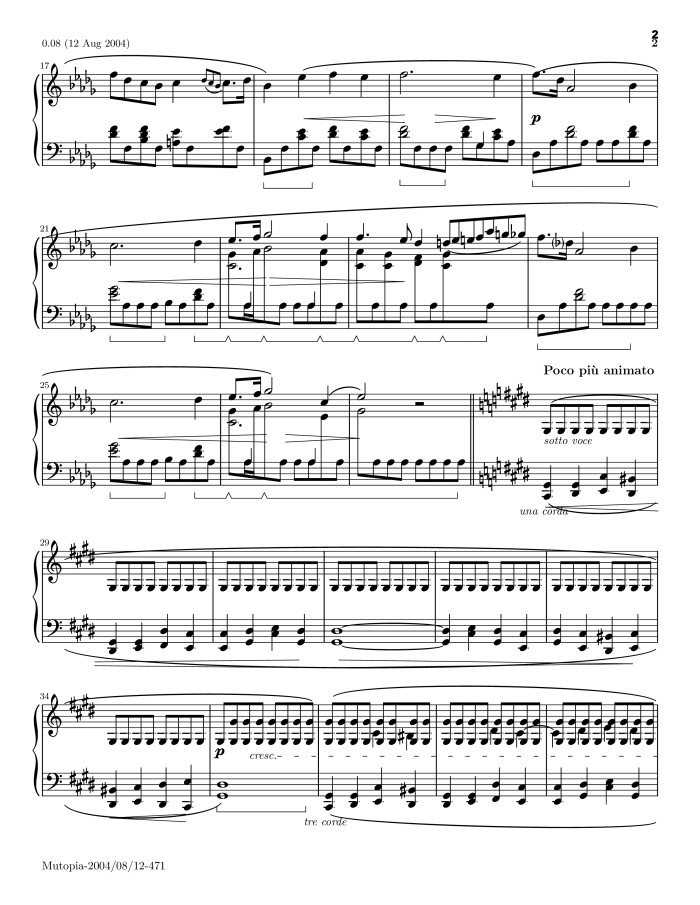
The music may look “atonal” in places, but the ear will recognize the charged harmonic fluctuations as the ones the heart already knows and wants to hear. It can also be used double-time at 152 BPM. In this transcription, once the central modulation from Db Major to C# Minor is taken care of enharmonically by carrying through the key signature of five flats to the end, there are no more serious obstacles to performing it on the harp that is the necessary “infringement” of the rules. Prlude in D Flat Major (Raindrop), Op.28, No.15 is a very sad song by Frdric Chopin with a tempo of 76 BPM. His unique sentimental expression could be derived from habits such as dwelling on the dissonant note of appoggiaturas, moving between major and minor modes or, as illustrated in this particular prelude, lingering in a “harmonic daydream” upon repeated notes and chords, acting as a hypnotic drone.
#CHOPIN RAINDROP PRELUDE PDF#
28 No.15 Easy Classical Guitar Tab / Sheet Music (Score) And Video Tutorial And Free Pdf (Above) And Chords.
#CHOPIN RAINDROP PRELUDE DOWNLOAD#
Chopin’s “accompanied melody” style bears close resemblance to Bellini’s cavatina. Download File Chopin Raindrop Prelude Op. The fifteenth in a collection of preludes written in each of the 24 keys in imitation of Bach, this Prelude was considered “the most important and most highly finished of them all” by the French pianist Alfred Cortot, in his practice edition. Thus we must resort to transcriptions, if we can’t live without certain composers and pieces. Legend has it that Chopin, who composed his preludes during a stay at a monastery in Mallorca with his lover Georges Sand, composed this piece while listening to the rain from the solitude of the monastery Sand describes him improvising the prelude during a storm in her novel Histoire de ma Vie. Point out that the repeated “raindrop” sound continues during the entire piece and creates continuity even as the melody changes.As harpists, we sometimes miss the famous classics of the repertoire, since most of the great composers did not write for us.Does this piece remind you of any other music we have listened to? (Encourage them to consider similarities and differences in instrumentation, tempo, mood.).Tell me about the music we listened to together.How is this Prelude different from the other Chopin Prelude we listened to ( Prelude 7)? Does it sound happier or sadder?.

There is a return to the major key (and the first melody) around five minutes into the piece.There is a shift to the minor key after about two minutes.It is in a major key at the beginning and end.Is this piece in a major or minor key? Does it change during the piece? Is this piece happy or sad? Is it exciting or not?.
#CHOPIN RAINDROP PRELUDE ARCHIVE#
Lawrence Estrey, Piano Addeddate 22:30:45 Externalmetadataupdate Identifier 13track13201907 Scanner Internet Archive HTML5 Uploader 1.6.4. Publication date Topics Raindrop Prelude, Chopin, piano, Lawrence Estrey. This is important because the repeated notes have been the major source of continuity in the piece until that point. Chopin Raindrop Prelude by Lawrence Estrey.


 0 kommentar(er)
0 kommentar(er)
